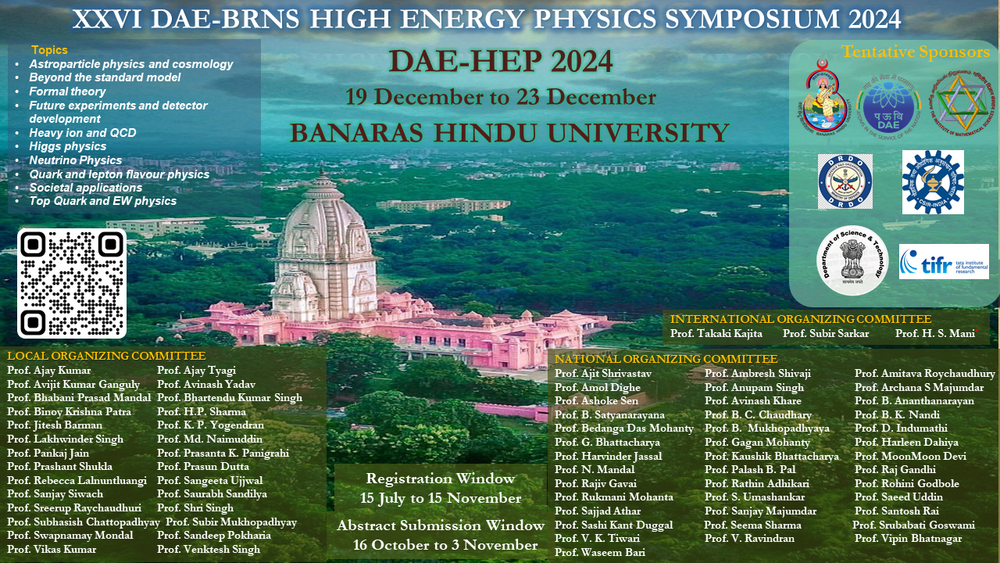Speaker
Description
The compact astrophysical objects like rotating neutron star are considered to be the universal charge particle accelerators and the prominent source of high energy photons. Their axial rotation cause the co-rotation of their magnetosphere. As a result the dipole magnetic field $B$ of the compact star induces the strong electric field $E_{\parallel}$ parallel to $B$. Such strong $E_{\parallel}$ field pulls out the charge particles from the surface of the star and accelerate them relativistically along the $B$ field\cite{Usov}. These highly accelerated particles emits high energy photons in an extreme $B$ field.
The photon emission takes place at each point of dipole field lines.
In this article we discuss about the evolution of Lorentz factor $\Gamma$ with respect to the photon path length $z$ inside the light cylinder of radius $R_{ls}$ of the star. The relation between $\Gamma$ and $z$ is evaluated from a differential equation known by the name as {\it{ Lorentz-Abraham-Dirac}} (LAD) equation\cite{beskin-book}. The LAD equation takes care of the energy loss (due to radiation reaction) and energy gained (due to Coulomb interaction) by the charge particles during their journey along the $B$ field lines. We plotted the dependency of $\Gamma$ vs $z$ in fig. [1]. It turned out that $\Gamma$ being position dependent shows minima corresponding to the point (denoted by $P_{0}$ in fig. [1]) where the energy loss by the charge particle due to radiation reaction is compensated by the energy gained powered by the rotational energy of the star.
Our analysis provides a non-trivial parameter space (i.e., the photon energy $\omega$, Lorentz factor $\Gamma(z)$ for a typical neutron star model having $B\sim 10^{12}$ Gauss, rotational time period $\sim $ 83 mins.) for carrying out the investigation of polarization of photon in highly magnetized plasma co-rotating with the compact star. We will incorporate the results obtained in this study for the investigation of high energy photon-axion interaction in the magnetosphere of the compact star.
\vskip 5cm
\begin{figure}[h!]
\hskip 5 cm\includegraphics[scale=1.0]{Gamma_vs_z_DAE_final.pdf}
\caption{Plot of $\Gamma$ (along y-axis) vs photon path length $z$ that is scaled by the radius of light cylinder $R_{lc}$ (along x-axis). The y-axis has been scaled by the factor $10^{-7}$.}
\end{figure}
| Field of contribution | Theory |
|---|

